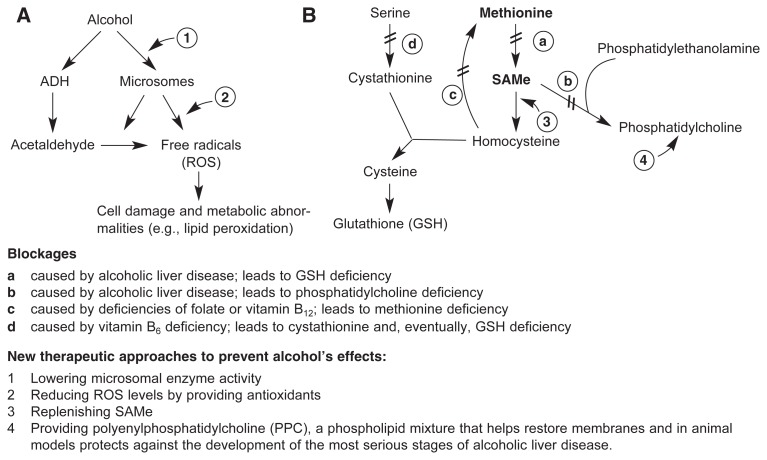Figure 4.
Alcohol’s effects on the levels of reactive molecules and the antioxidant glutathione (GSH) in the cell. (A) Alcohol breakdown by the enzyme alcohol dehydrogenase (ADH) and by the microsomal ethanol-oxidizing system (MEOS) generates acetaldehyde, a reactive molecule that among other harmful effects interacts with cysteine, preventing it from being used to generate GSH (see panel B). Both the MEOS and acetaldehyde also lead to the generation of reactive oxygen species (ROS) that damage the cells through various mechanisms (e.g., lipid peroxidation). ROS can be eliminated or converted to harmless substances by GSH and other antioxidants. (B) One of the precursors of GSH is the amino acid methionine, which first is converted to S-adenosylmethionine (SAMe). SAMe then is further modified to yield cysteine. Alcohol consumption and alcoholic liver disease cause the blocks labeled a and b; both folate and vitamin B12 deficiency cause block c; vitamin B6 deficiency causes block d; and all these blockages interfere with GSH production. Administration of SAMe can help raise GSH levels in the cells.

